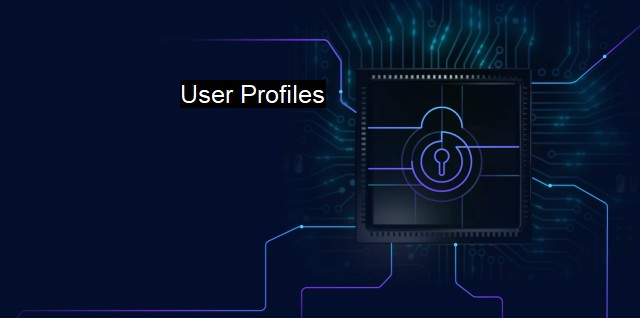What are User Profiles?
The Importance of User Profiles in Cybersecurity: Customized Approaches to Data Security, Access Control, and Identity Management
In the realms of cybersecurity and antivirus protection, the term "user profiles" carries significant weight. User profiles are essentially digital representations of end users within a particular system which contain data about the user's habits, preferences, and often, credentials. These profiles not only streamline the user's experience and personal use of the computer, but are longer-lasting than traditional cookies, hence, they have become increasingly popular.Depending on how comprehensively they're applied, user profiles might range from holding basic information about hardware preferences to more complex data such as a person's browsing habits, download history, and behavioral trends. For instance, they might hold data about the screen resolution settings a user prefers for their device, the individual's chosen default language, the frequently visited websites, or what types of files are often downloaded and from which locations. From a UX standpoint, user profiles are often seen as great tools that enhance a personalized user experience, enabling systems to present users with relevant content or interfaces based on historical data.
In the context of cybersecurity and antivirus protection, user profiles shift from presenting an opportunity to a threat. The comprehensive data held in user profiles poses a severe security risk if it falls into the wrong hands, as it does not merely risk system integrity but also end users' confidentiality and privacy, which is tantamount to identity theft. Hackers aim to gain access to these dense clusters of user information to either conduct illicit activity under the victim's impersonation or sell the credentials and personal information in the 'dark web.' The correlation between the information in a user profile also can make it easier for threat actors to develop sophisticated phishing attacks that can be well-targeted and difficult to detect.
By deploying strong antivirus protection strategies, one can counter the potential risks associated with user profiles. Antivirus software typically monitors for keyloggers, malware, spyware, ransomware, and rootkits that might target user profiles. They also may provide web protection tools that initiate alerts if users try to visit a web site that could try to download malicious software onto their systems. antivirus software can scan a system’s user profiles to find viruses or malware hidden deep within the computer's files.
Regularly updating a system’s antivirus security protocols helps to ensure that it can counteract any new threat patterns that could target user profiles. It's also crucial to consider two-step verification processes and other such robust security features that can prevent unauthorized accesses to protective user profile layers.
Also, another best practice in managing user profiles is following the principle of least privilege (PoLP), an information security concept in which a user is given the minimum levels of access necessary to perform his or her job functions. This restricts the possible exploit points in user profiles, thereby minimizing potential damage from attacks that might exploit compromised user accounts.
46714/forum_body`#564af50eu1
Undoubtedly, user profiles continuously collect personal data to personalize the UX and enhance usage patterns which imposes great cybersecurity responsibilities on companies' shoulders. While this data remains useful in designing effective user-centered interfaces, it becomes the duty of every individual and organization to buttress the principles of privacy, integrity, and availability. Understanding the confidentiality, integrity, and availability (CIA) triad is also crucial in user data protection.
User profiles are meaningful reservoirs of information that allow for personalized, smooth, and functional experiences. the potential of these nodes of information being exploited by malicious entities serves as a permanent reminder that prioritizing cybersecurity cannot be overstated. As individuals and organizations continue interacting in the digital domain, the imperative to adopt robust measures to protect user profiles remains paramount.

User Profiles FAQs
What is a user profile in the context of cybersecurity and antivirus?
In the context of cybersecurity and antivirus, a user profile is a set of preferences and settings that define how a user interacts with their computer or other digital device. These settings can include things like user permissions, password requirements, and security preferences.Why are user profiles important for cybersecurity and antivirus?
User profiles are important for cybersecurity and antivirus because they allow administrators and security professionals to control and monitor user behavior. By setting permissions and security preferences, they can ensure that users are complying with security policies and that the system is protected from unauthorized access or malware.Can user profiles be used to prevent cyber attacks?
Yes, user profiles can be used to prevent cyber attacks by limiting access to sensitive information and resources. By creating user profiles with different levels of access, administrators can ensure that only authorized users have access to certain files, databases, or applications. They can also use user profiles to enforce password policies and other security measures that reduce the risk of cyber attacks.What are some common components of a user profile in cybersecurity and antivirus?
Some common components of a user profile in cybersecurity and antivirus include username, password, user role, security permissions, and security preferences. Other components may include email address, phone number, and other contact information. Different systems may have different components depending on their specific security requirements and policies.| | A | | | B | | | C | | | D | | | E | | | F | | | G | | | H | | | I | | | J | | | K | | | L | | | M | |
| | N | | | O | | | P | | | Q | | | R | | | S | | | T | | | U | | | V | | | W | | | X | | | Y | | | Z | |
| | 1 | | | 2 | | | 3 | | | 4 | | | 7 | | | 8 | | |||||||